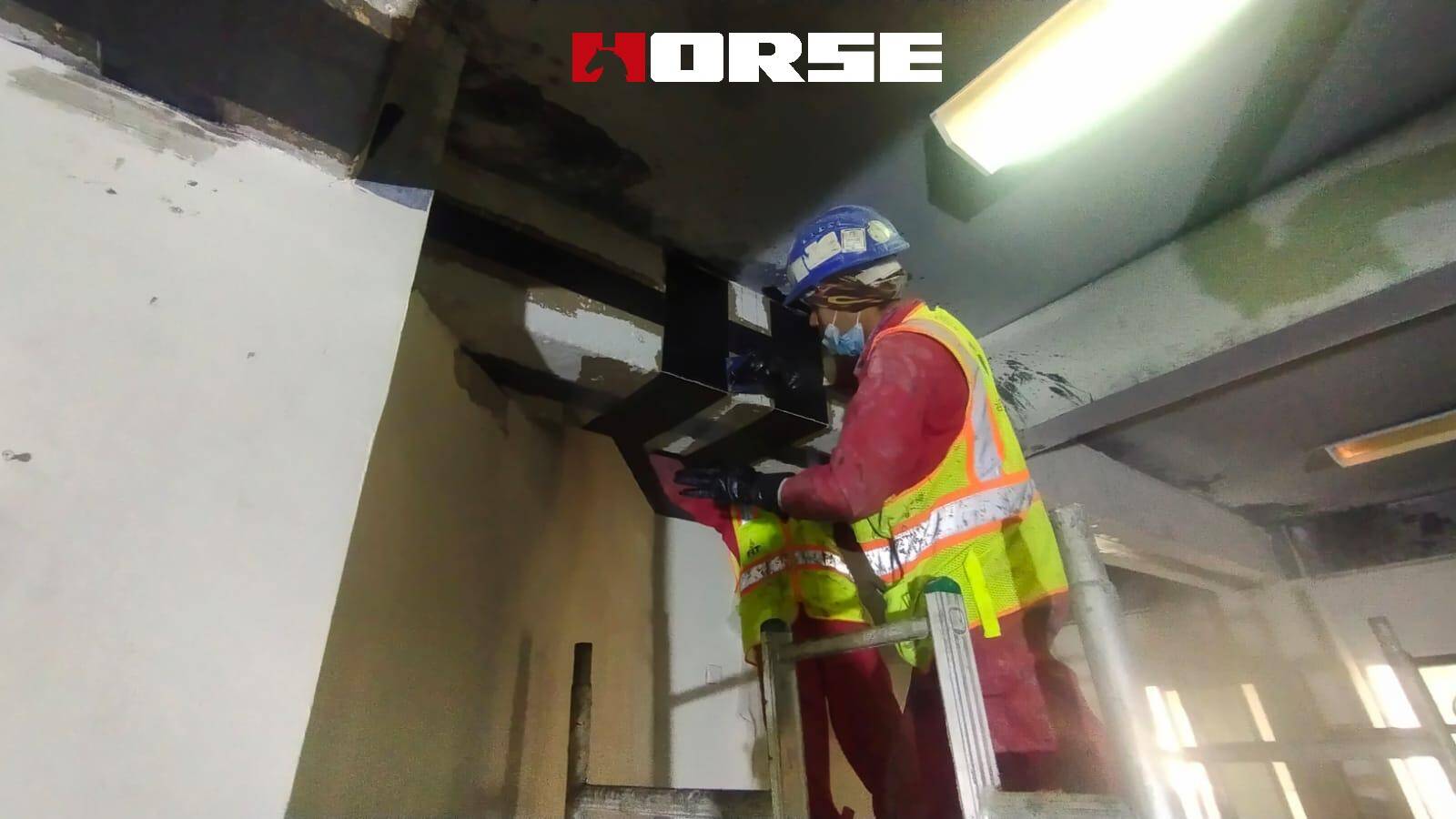Parking Lot Reinforcement
Carbon Fiber In Qatar
Prolonged vehicular loading and localized load concentration during operational periods—such as prolonged utilization of specific zones as temporary unloading bays—have induced fatigue damage in the tensile zones of beams.
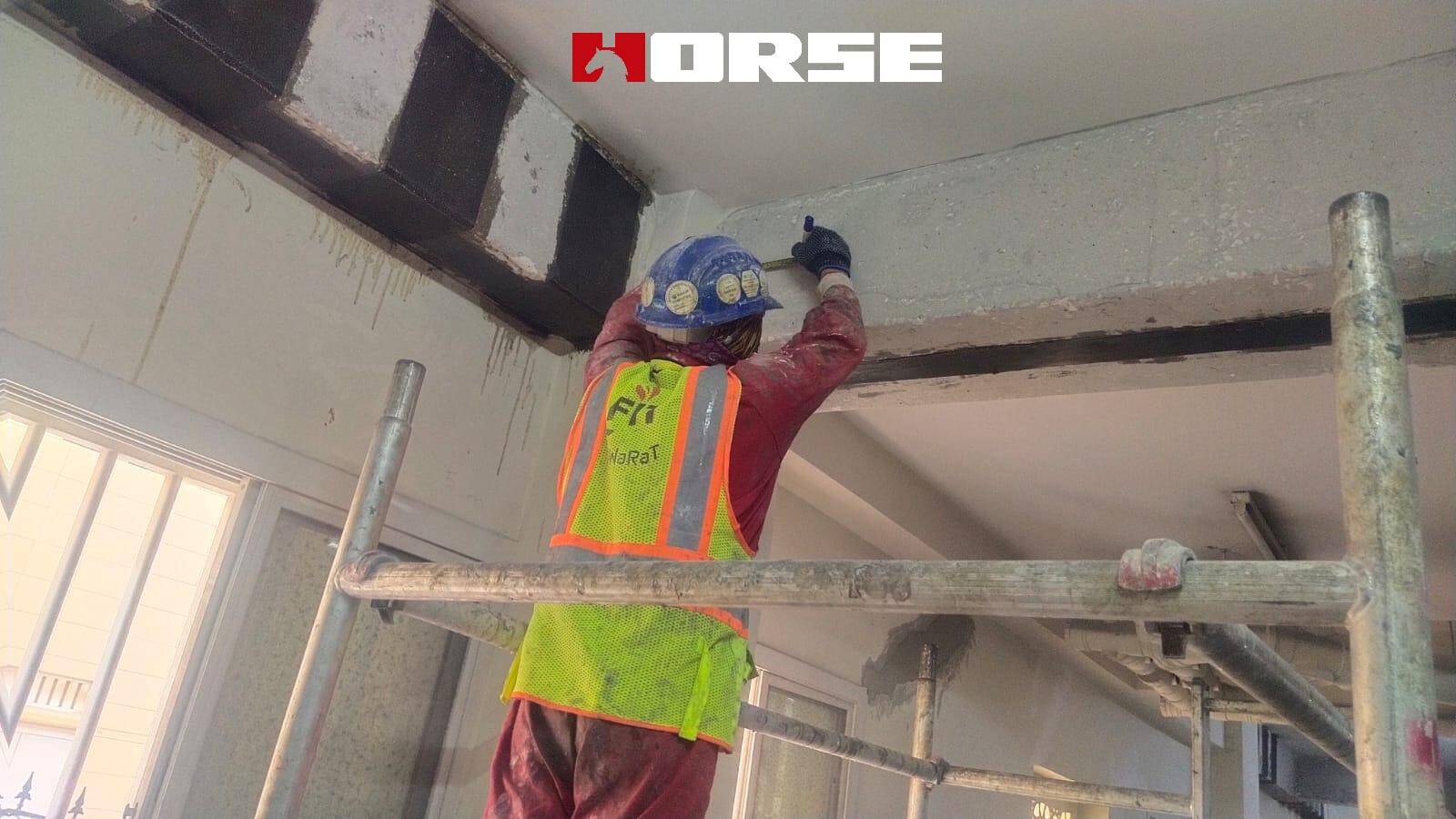
Prolonged vehicular loading and localized load concentration during operational periods—such as prolonged utilization of specific zones as temporary unloading bays—have induced fatigue damage in the tensile zones of beams. Concurrently, the load-bearing capacity of floor slabs has exhibited a measurable decline relative to the initial design parameters. Furthermore, inspections revealed that certain beams are at risk of potential steel reinforcement corrosion, attributed to concrete carbonation and inadequate thickness of the steel protective layer. Failure to address these issues promptly could exacerbate detrimental impacts on structural safety and long-term durability.
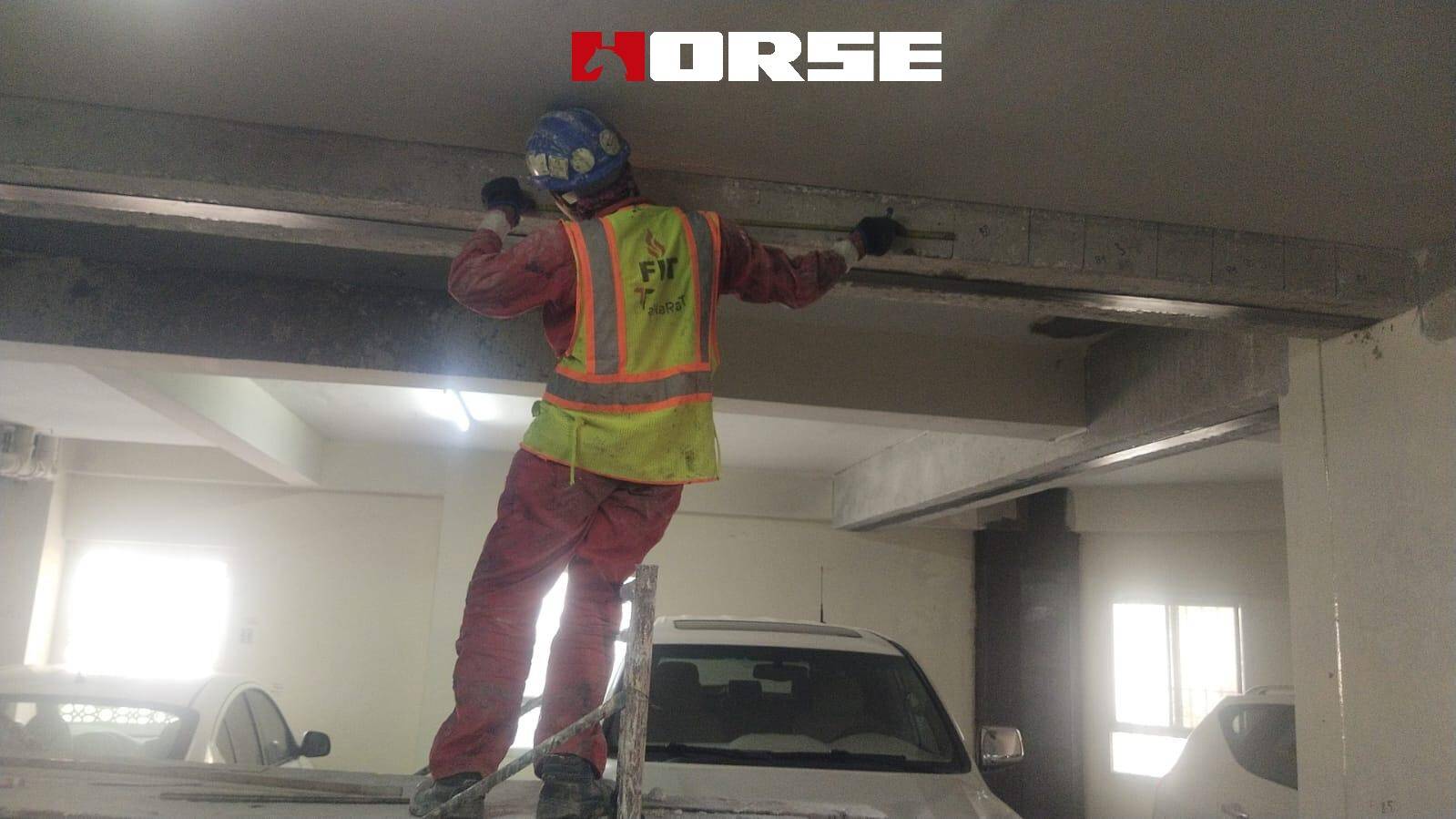
Given the imperative for the parking facility to resume operational service expeditiously, coupled with the drawbacks of conventional reinforcement methodologies—such as excessive spatial occupation and protracted construction timelines—carbon fiber materials were selected as the optimal solution.
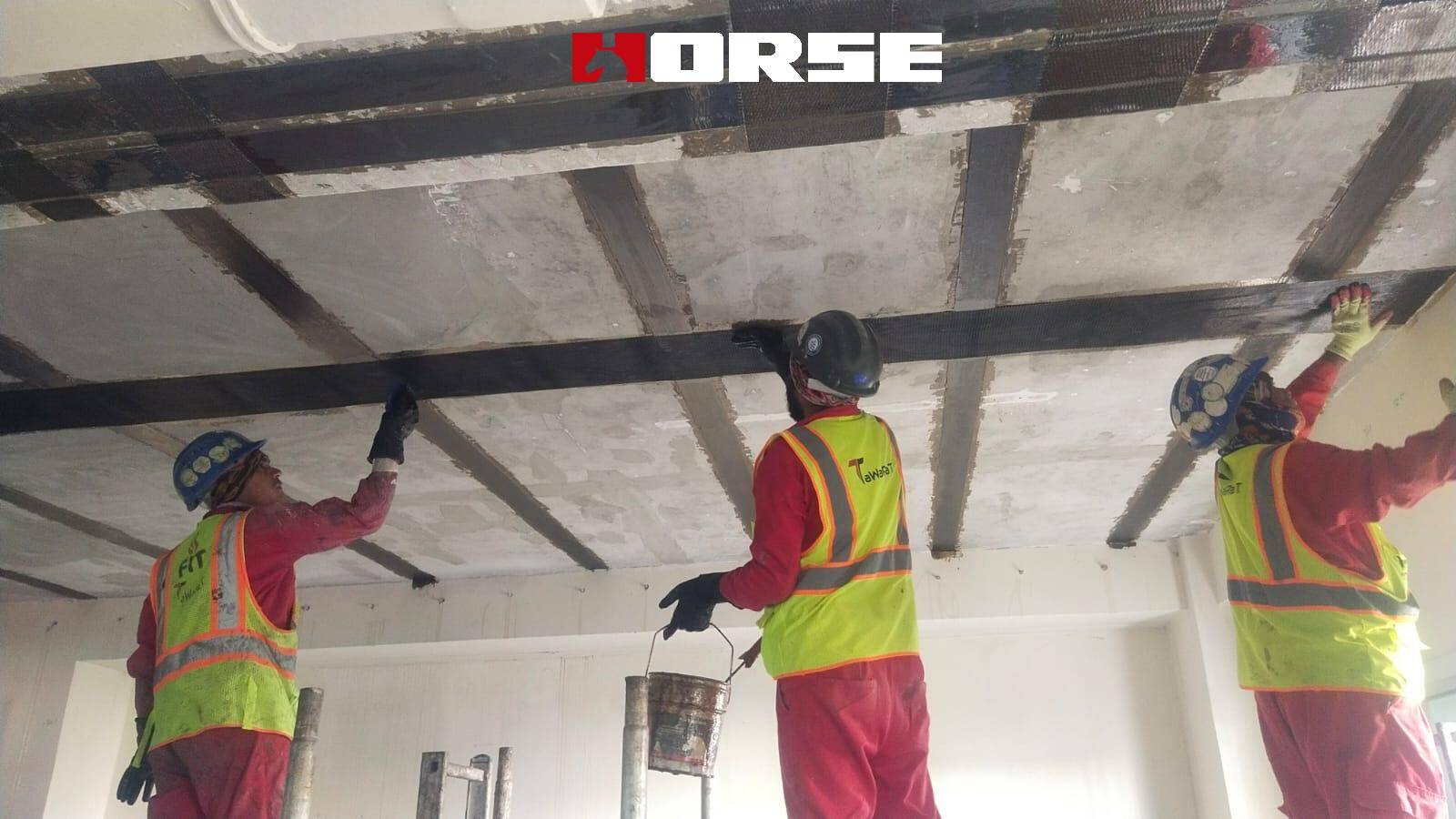
Their inherent advantages, including high tensile strength, low areal density, streamlined installation procedures, and minimal perturbation to the original structure, justified their application for beam and floor slab reinforcement.
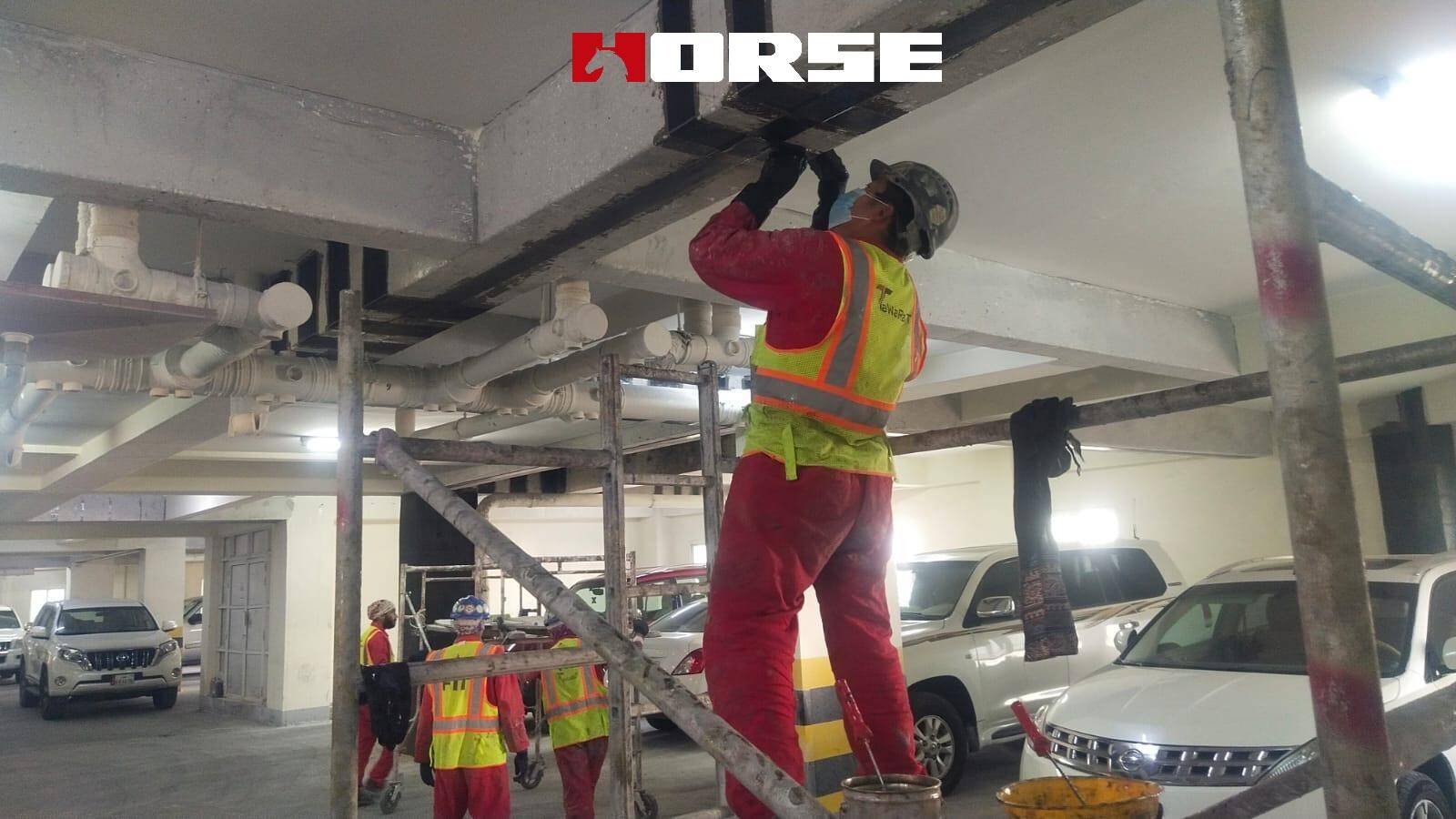
The reinforcement workflow commenced with surface preparation of beams and floor slabs, involving the thorough removal of contaminants such as laitance and oil residues from concrete surfaces, followed by meticulous crack remediation. Subsequent to surface treatment, proprietary adhesive was applied, and carbon fiber sheets were bonded to the tensile regions of beams and floor slabs in accordance with engineered specifications. This integration fosters a monolithic force-transfer mechanism between the adhesive, carbon fiber reinforcement, and the existing concrete substrate, thereby enhancing load-bearing capacity, structural rigidity, and crack resistance of the reinforced elements.
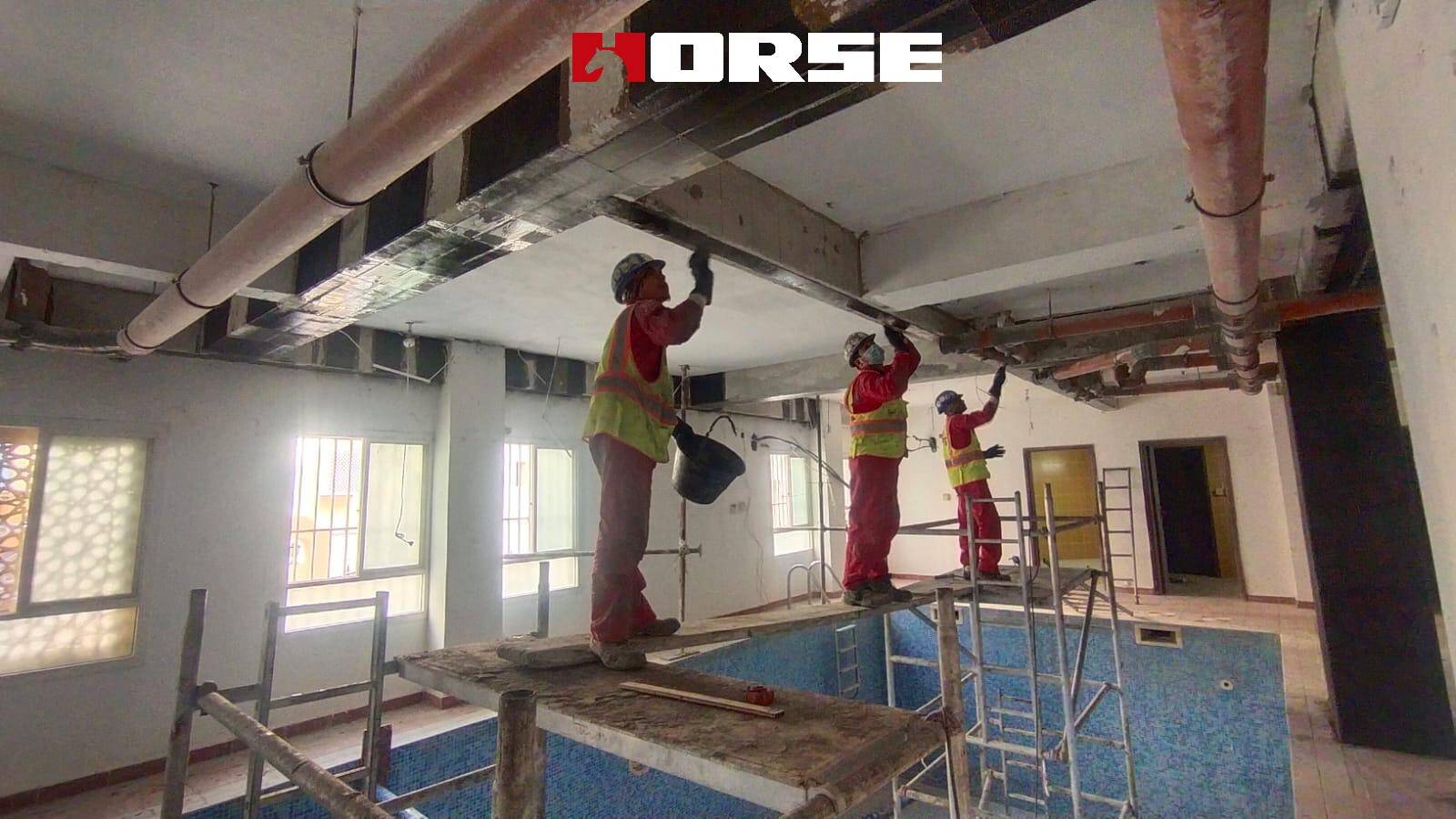
Post-reinforcement validation assessments confirmed a substantial enhancement in the structural performance of beams and floor slabs, ensuring compliance with current and projected operational requirements over the service lifecycle.
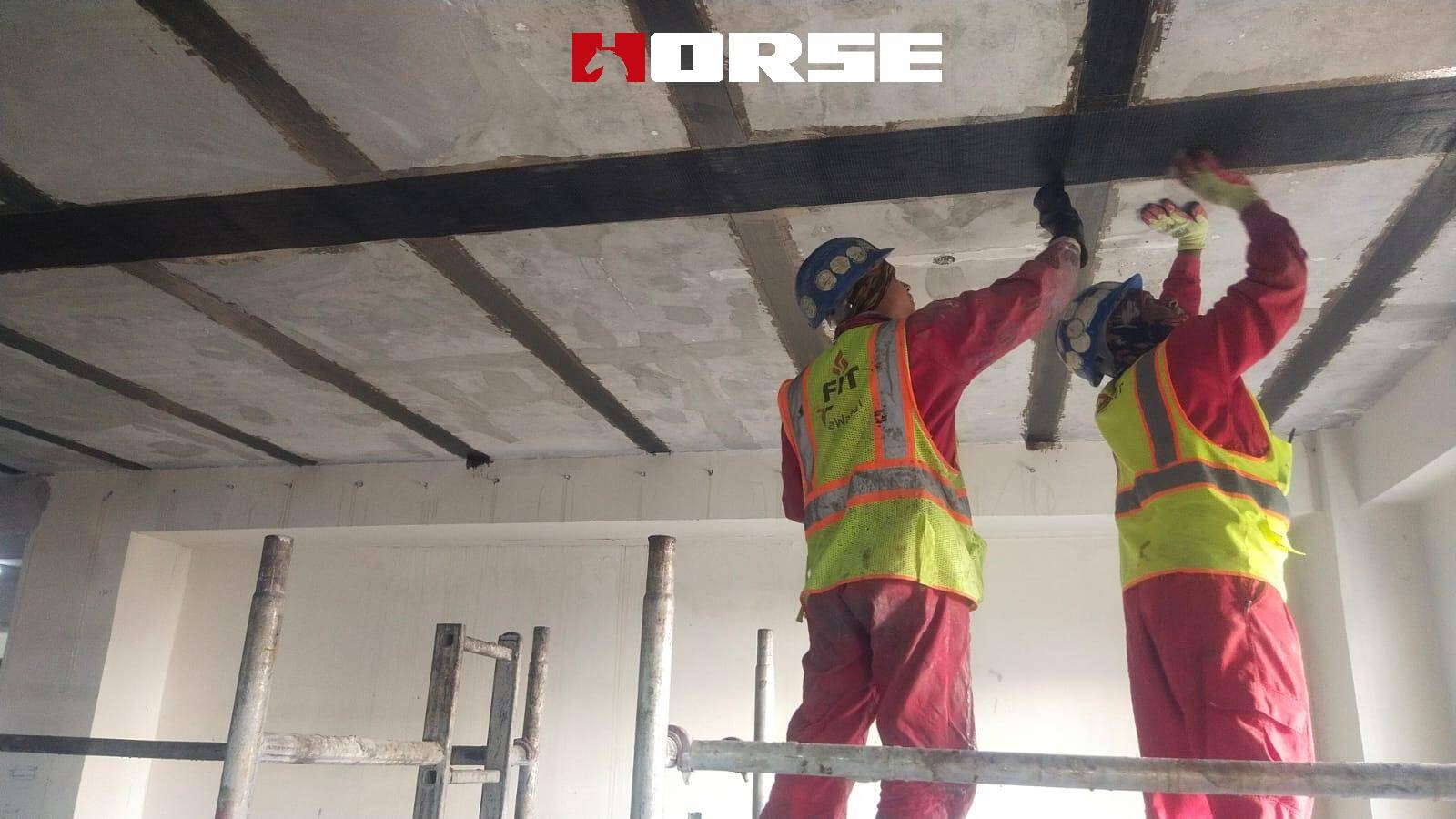
We extend our gratitude to our Qatari client for providing photographic and video documentation. We look forward to fostering a sustained collaborative partnership in future projects.
